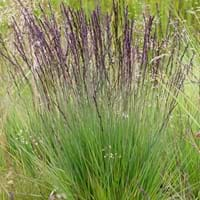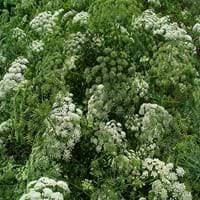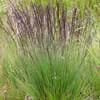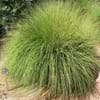Life Span
Perennial
Annual and Perennial
Origin
Asia, Europe, North Africa
Southern Europe, Mediterranean, Northern Africa
Types
purple moor-grass 'Moorhexe', variegated purple moor-grass
Not Available
Habitat
Boggy areas, Dry and Young forest Heaths, Lowland
Cultivated Beds, Loamy soils, Sandy areas, Well Drained
USDA Hardiness Zone
4-8
8-15
AHS Heat Zone
9 - 1
9 - 1
Sunset Zone
1a, 1b, 2a, 2b, 3a, 3b, 4, 5, 6, 7, 8, 9, 14, 15, 16, 17
A1, A2, A3, H1, H2, 1a, 1b, 2a, 2b, 3a, 3b, 4, 5, 6, 7, 8, 9, 10, 11, 12, 13, 14, 15, 16, 17, 18, 19, 20, 21, 22, 23, 24
Habit
Clump-Forming
Upright/Erect
Flower Color
Dark Purple
White
Flower Color Modifier
Bicolor
Bicolor
Fruit Color
Non Fruiting Plant
Sandy Brown
Leaf Color in Spring
Green, Dark Green
Green, Light Green
Leaf Color in Summer
Light Green
Green, Light Green
Leaf Color in Fall
Green, Yellow green, Gold
Green, Light Green
Leaf Color in Winter
Tan
Light Green
Leaf Shape
Needle like
Small oblong
Plant Season
Spring, Summer, Fall, Winter
Spring, Summer, Fall
Sunlight
Full Sun, Partial Sun
Full Sun, Partial Sun
Growth Rate
Medium
Very Fast
Type of Soil
Clay, Loam, Sand
Loam, Sand
The pH of Soil
Acidic, Neutral
Neutral
Soil Drainage
Average
Well drained
Bloom Time
Late Spring, Summer, Late Summer, Early Fall, Fall
Early Summer, Summer, Late Summer, Early Fall, Indeterminate
Tolerances
Not Available
Drought
Where to Plant?
Ground, Pot
Ground
How to Plant?
Divison, Transplanting, Vegetative Reproduction
Rooted stem cutting, Seedlings
Plant Maintenance
Low
Medium
Watering Requirements
Requires regular watering, Water more frequently during periods of extreme drought
Do Not over Water, Water daily during growing season, Water Deeply, Water in morning to avoid prompting diseases
In Summer
Lots of watering
Lots of watering
In Spring
Moderate
Moderate
In Winter
Average Water
Average Water
Soil pH
Acidic, Neutral
Acidic, Alkaline, Neutral
Soil Type
Clay, Loam, Sand
Loam, Sand, Well drained
Soil Drainage Capacity
Average
Rich
Sun Exposure
Full Sun, Partial Sun
Full Sun, Partial shade
Pruning
Prune in winter, Remove damaged leaves, Remove dead branches, Remove dead leaves
Prune after flowering
Fertilizers
No need to fertilize every year
All-Purpose Liquid Fertilizer, fertilize in growing season, Nitrogen, Phosphorous, Potassium
Pests and Diseases
Pests and diseases free
Red blotch
Plant Tolerance
Not Available
Drought
Flower Petal Number
Single
Single
Fragrant Leaf
No
Not Available
Fragrant Bark/Stem
No
Not Available
Foliage Texture
Fine
Fine
Foliage Sheen
Matte
Matte
Invasive
Sometimes
Sometimes
Attracts
Not Available
Butterflies
Allergy
Not Available
Headache, Hyperacidity, Liver disease, Nausea, Skin irritation, Vomiting
Aesthetic Uses
Showy Purposes, Water gardening
Showy Purposes
Beauty Benefits
Not Available
Not Available
Environmental Uses
No fertilizer, pesticides, or herbicides needed
Air purification, Weather protection
Medicinal Uses
No Medicinal Use
Asthma, Digestive disorders, Psoriasis, Reduces toothache, Vitiligo
Part of Plant Used
Whole plant
Root, Seeds
Other Uses
Used as Ornamental plant
Edible syrup, Used As Food, Used for its medicinal properties
Used As Indoor Plant
No
No
Used As Outdoor Plant
Yes
Yes
Garden Design
Container, Foundation, Mixed Border
Groundcover, Lawns and Turf, Mixed Border
Botanical Name
Molinia caerulea
AMMI majus
Common Name
purple moor-grass
Bishop's Weed, Bullwort
In Hindi
बैंगनी दलदल घास
बिशप निराना
In German
Pfeifengras
Bischofs Unkraut
In French
pourpre lande-grass
la mauvaise herbe de l'évêque
In Spanish
púrpura amarra-hierba
biznaga
In Greek
μωβ Moor-γρασίδι
ζιζανίων επισκόπου
In Portuguese
purple moor-grass
erva daninha do Bispo
In Polish
fioletowy Moor-trawa
chwastów biskupa
In Latin
Maurus herba-purpura,
Episcopi viriditas
Phylum
Magnoliophyta
Magnoliophyta
Class
Liliopsida
Magnoliopsida
Genus
Molinia
Trachyspermum
Clade
Angiosperms, Commelinids, Monocots
Angiosperms, Asterids, Eudicots
Tribe
Not Available
Not Available
Subfamily
Not Available
Not Available
Number of Species
Not Available
Not Available
Importance of Molinia Caerulea and Bishop's Weed
Want to have the most appropriate plant for your garden? You might want to know the importance of Molinia Caerulea and Bishop's Weed. Basically, these two plants vary in many aspects. Compare Molinia Caerulea and Bishop's Weed as they differ in many characteristics such as their life, care, benefits, facts, etc. Every gardener must at least have the slightest clue about the plants he wants to plant in his garden. Compare their benefits, which differ in many ways like facts and uses. The medicinal use of Molinia Caerulea is No Medicinal Use whereas of Bishop's Weed is Asthma, Digestive disorders, Psoriasis, Reduces toothache and Vitiligo. Molinia Caerulea has beauty benefits as follows: Not Available while Bishop's Weed has beauty benefits as follows: Not Available.
Compare Facts of Molinia Caerulea vs Bishop's Weed
How to choose the best garden plant for your garden depending upon its facts? Here garden plant comparison will help you to solve this query. Compare the facts of Molinia Caerulea vs Bishop's Weed and know which one to choose. As garden plants have benefits and other uses, allergy is also a major drawback of plants for some people. Allergic reactions of Molinia Caerulea are Not Available whereas of Bishop's Weed have Headache, Hyperacidity, Liver disease, Nausea, Skin irritation and Vomiting respectively. Having a fruit bearing plant in your garden can be a plus point of your garden. Molinia Caerulea has showy fruits and Bishop's Weed has no showy fruits. Also Molinia Caerulea is not flowering and Bishop's Weed is flowering. You can compare Molinia Caerulea and Bishop's Weed facts and facts of other plants too.





